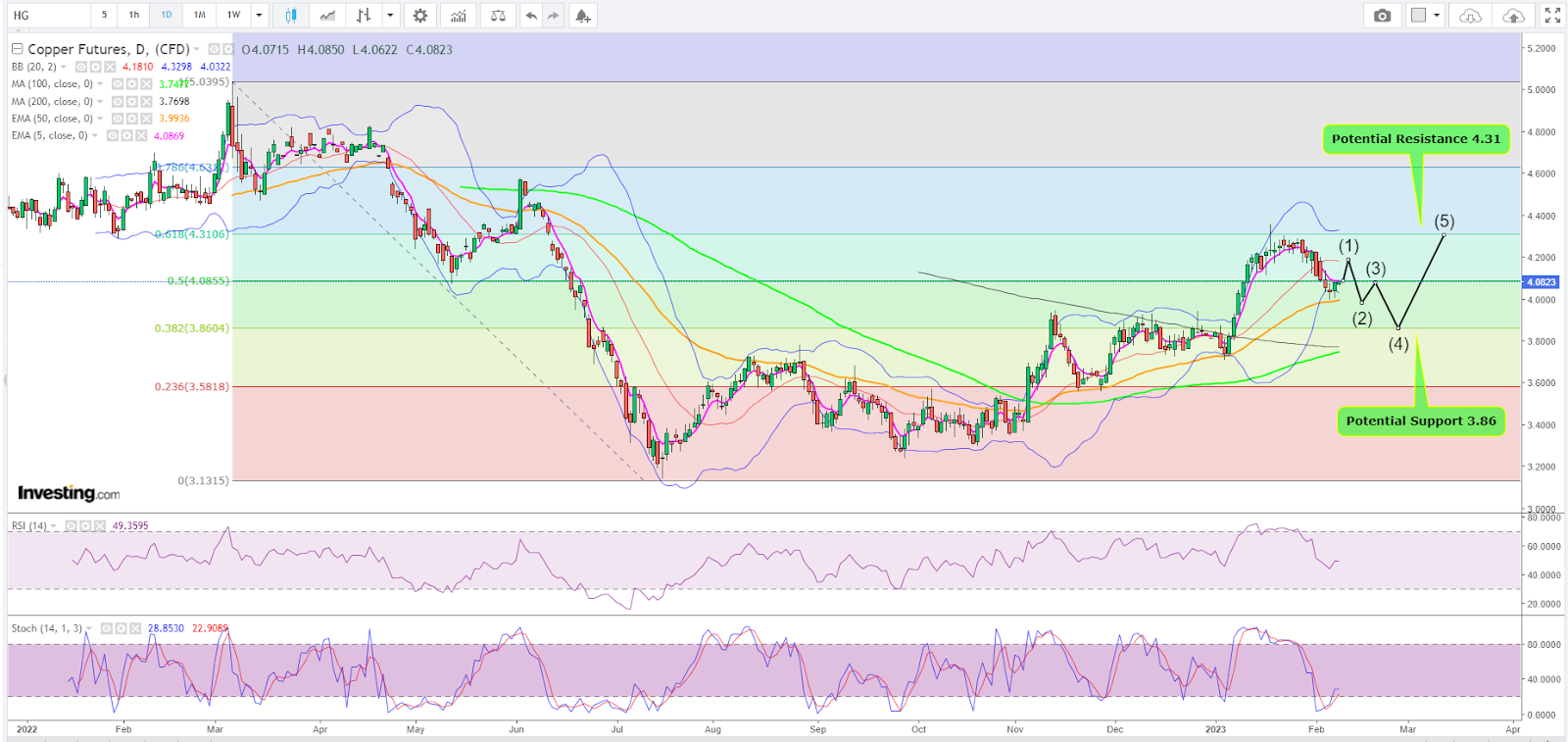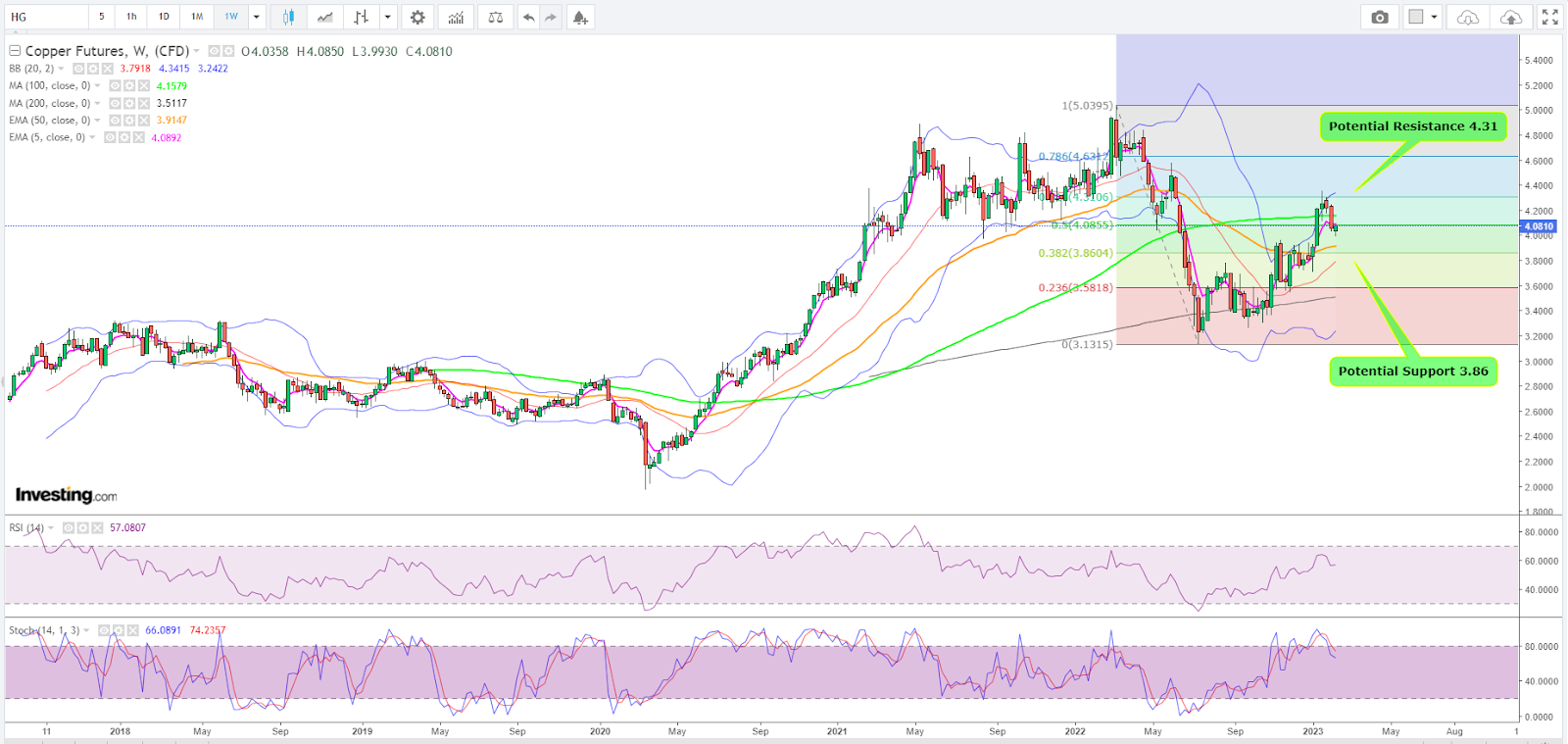- Global copper supply being squeezed, major deficit forecast through 2030
- Copper prices are down in Feb., after three months in the green
- Near-term copper story dictated by China vacuum on data, firmer dollar
- Longer term narrative explosive from supply deficits in Peru to Chile
Political protests and suspended mine operations in Peru. Lower Chilean output. Global copper supplies are being squeezed well before a major deficit forecast through the end of the decade. Yet, the so-called red metal’s prices are down in February, snapping three straight months of gains.
Copper is a leading pulse check for the global economy due to its use in everything from cell phones to electrical circuitry and industrial machinery.
A copper squeeze could, thus, be an indicator that global inflationary pressures will worsen and subsequently compel central banks to maintain their hawkish stance for longer, analysts say. Yet, some argue that the metal — dubbed Dr. Copper for its ability to be used as a diagnostic tool for the economy — has been delinked from US and world growth activity during many points of the past decade.
Copper hit a record high of $5.04 an lb on New York’s COMEX in March 2020. Since then, it had gotten to a near-two-year low of $3.13 in July and a seven-month high of $4.36 in January. It currently hovers at $4.10.
There are basically two sides to the copper story: near-term and long-term.
In the near-term narrative, prices are being restrained by US economic uncertainty and data on Chinese demand that has yet to emerge. The dollar’s newfound strength might also be a problem.
In the longer term, supply breakdowns in the metal’s top-producing countries in Latin America could lead to a major seizure in copper supply by 2030, potentially creating an explosive situation for its prices.
The Near-Term Story

Unexpectedly strong US jobs growth in January has led to speculation that the Federal Reserve may cling longer than expected to high interest rates, adding stress to the economy, even as the central bank intends to use monetary tightening to fight inflation.
In China’s case, investors are awaiting evidence that demand has returned to the world’s No. 2 economy, which has abandoned all coronavirus-related restrictions since the start of the year. The Caixin Manufacturing PMI rose modestly from 49.0 in December to 49.2 in January. While business optimism strengthened as companies expected economic conditions to improve in coming months, fear of new COVID-19 spikes has continued to pressure operations at the factory level.
Nichole Bastin, in a blog on the trade journal MetalMiner, noted that copper was reacting to short-term resistance when it rallied at the start of the year.
“Copper prices hit their highest point since June toward the end of January before the rally began to stabilize,” Bastin wrote, adding:
“Optimism over China’s return helped fuel the upside momentum, but sentiment appears to have shifted going into February. Copper prices need to break lows and form a lower high to change the overall trend.”
Another problem for the red metal is the dollar, which seems to have found a bottom after four straight months of weakness that began in September. A stronger dollar typically makes commodities priced in the greenback costlier for holders of other currencies, thus weighing on the upside in copper.
The Dollar Index, which pits the greenback against six major currencies, fell just over 1% between January and February and now hovers slightly above the 100 mark. It hit a near 20-year high of 114.745 in September before losing 10% between then and the end of January.
The January US jobs data adds to copper’s problems in that sense, as the dollar could strengthen from fears of a tighter rate environment triggered by a runaway labor market.
Even then, this week’s fear about jobs-heightened interest rates may also be overdone.
Fed Chairman Jerome Powell, when asked about last month’s non-farm payrolls — which delivered 517,000 jobs versus a forecast 185,000 and a previous 260,000 — acknowledged that it had not made the central bank’s job of fighting inflation any easier.
But Powell also said the Fed wanted to give disinflation, which has just begun, a chance to work instead of just resorting to higher interest rates. Powell said during a chat on the economy hosted by the Economic Club of Washington:
“If strong labor market reports or higher inflation reports continue, the Fed may need to raise rates more than is currently priced in.”
At the same time, the Fed chair added:
“Disinflation has begun, but it has a long way to go. This process is likely to take quite a bit of time. It’s likely to be bumpy, not smooth.”
US inflation, as measured by the CPI, or Consumer Price Index, grew at 6.5% per annum, its slowest since October 2021. Still, that was more than three times the Fed’s target of 2% per annum.
The Fed has increased interest rates by 450 basis points over the past year, taking them to a peak of 4.75% from just 0.25% after the COVID-19 outbreak in March 2020.
Powell also said it will be well into 2024 for the Fed to get inflation back to 2% per annum — a target the central bank has held for a quarter century.
The Fed’s next decision on rates will be on March 16, well after the release of the February employment report on March 3.
Should there be another round of heady jobs growth this month, then the central bank’s policymaking FOMC, or Federal Open Market Committee, will almost certainly be rethinking the merits of continuing with February’s 25-basis-point hike, said analysts, who see a potential return to December’s 50-basis-point increase.
“The real risk is how many rate hikes we could have going forward, rather than the quantum of the next hike,” said Saira Malik, chief investment officer at asset manager Nuveen.
Powell, at a news conference after this month’s FOMC meeting, said he expected “a couple more” hikes to get rates to what he called a “restrictive stance” to fight inflation. The Fed’s next two meetings are in March and May.
Economists are, however, betting the volatile jobs market will force the central bank to raise rates at least two more times beyond what Powell anticipates. The FOMC’s meetings after May are scheduled in June and July.
The Long-Term Story

There isn’t enough copper in the world, and the shortage could last till 2030, industry experts said in comments carried by CNBC this week.
Robin Griffin, Wood Mackenzie’s Vice President of Metals and Mining, says ongoing unrest in Peru and higher demand for copper in the energy transition industry would form the base for strongly higher prices of the metal in coming years. He adds:
“Anytime there’s political unrest it has a whole range of effects. And the obvious one … is the potential for mining sites to have to close. We’re already forecasting major deficits in copper to 2030.”
Peru has been rocked by protests since former President Pedro Castillo was ousted in December in an impeachment trial. The South American nation accounts for 10% of the global copper supply.
Glencore (OTC:GLNCY) announced on Jan. 20 it was suspending operations in its Antapaccay copper mine located in Peru after protesters looted and set fire to its premises.
Additionally, Chile — the world’s largest copper producer which accounts for 27% of global supply — recorded a year-on-year decline of 7% in November.
Goldman Sachs wrote in a separate note dated Jan. 16:
“Overall we believe Chile will likely produce less copper from 2023 to 2025.”
The reopening of China and growth in the automotive and energy transition industry have stoked demand for the red metal, putting further strain on copper resources, said Tina Teng, market analyst at CMC Markets. She adds:
“China’s reopening has a major impact on copper’s price as this improves [its] demand outlook and will push copper prices even higher due to the supply shortage, at the back of the clean energy transition which makes mining harder.”
“The deficit may last till a potential global economic recession caused by the current headwinds, by 2024 to 2025,” Teng said, forecasting that by then, copper prices might double.
Copper’s Technical Outlook
Notwithstanding copper’s fundamentals, technicals of the metal could reprise $4.63 in a breakout, said Sunil Kumar Dixit, chief technical strategist at SKCharting.com.
“Following its breakout above the $4.08 Fibonacci level, copper has been consolidating below this zone,” said Dixit.
“Momentum distribution is likely to move sideways, with lower highs and lower lows, as shown in copper’s daily chart. It could reach $3.86, before resuming an uptrend which initially targets retesting the swing high of $4.36 in the near term.”
Dixit said copper’s mid-term weekly chart showed prices needing strong triggers to break above $4.31, which is a strategic 61.8% Fibonacci level of correction from the move between $5.04 and $3.13.
“Failing to clear through the mentioned resistance zone can put copper in a bearish track, pushing prices down towards $3.86 as the initial downside target. On the higher side, a strong break above $4.31 will open the way for the next leg higher to $4.63.”
Disclaimer: Barani Krishnan uses a range of views outside his own to bring diversity to his analysis of any market. For neutrality, he sometimes presents contrarian views and market variables. He does not hold positions in the commodities and securities he writes about.
